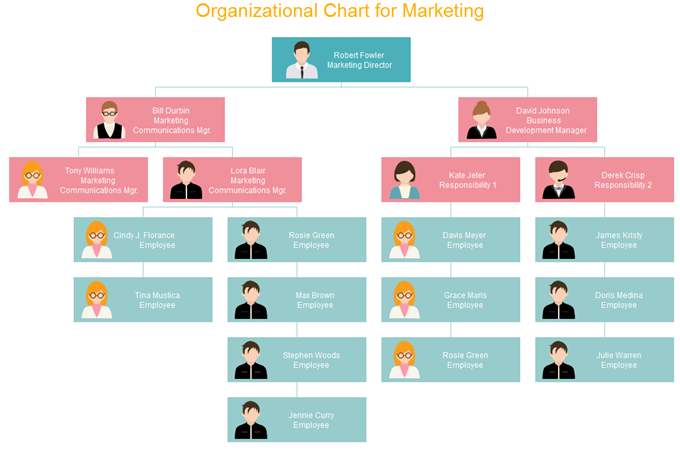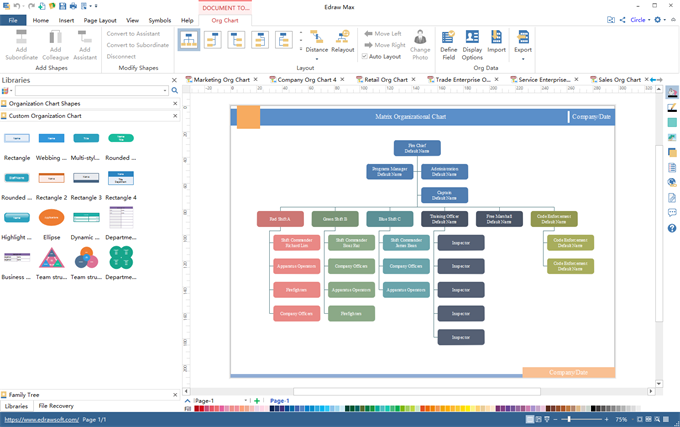Org chart can be classified into two types: vertical and horizontal, based on the style of the layout. A vertical org chart looks like a pyramid. At the top is the CEO or company president. A single segment consists of a series of middle management and the manager who is responsible for their department. In contrast, a horizontal org chart has no middle management, hence normally all employees need to report to only one manager. Such type is also called the flat org chat. This article is going to explain the most significant differences between vertical org chart and horizontal org chart in terms of decision-making, collaboration, and communication.
Figure 1. Vertical Org Chart Example

The functional org chart is a popular organizational diagram usually implemented by small business companies. In this structure, an organization can be grouped into separated departments by areas of specialty or function. Those departments are vertical and disconnected from each other.

- More Easy Org Chart Creatorfor Professionally Managing Your Business Teams
The functional org chart is one of several common organizational structure diagrams many companies have adopted and a clear depiction of how people are organized. Wherein employees are segmented based on their skills and specialties. Usually, people are grouped into departments and made to report to and follow their department manager. Each functional manager is responsible for supervision and direction with his or her department subordinates. This article aims for an explanation of functional org chart by five characteristics.

- More Easy Org Chart Creatorfor Professionally Managing Your Business Teams
It Fits Small Companies Well
As for small companies, their functional org charts get low hierarchy layers, therefore, it’s concise and clear which can make the company operate efficiently. Functional org chart performs well when the hierarchy layer is less than four. While as the company expands to a very large one, functional org chart would be much more complicated and redundant even cause bureaucracy which would make it hard to management and organization to respond to outer market quickly.
